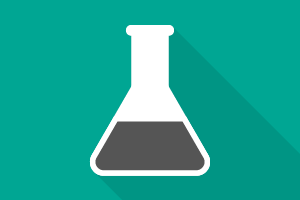Classroom Resources: Energy & Thermodynamics
Filter by:
51 – 60 of 60 Classroom Resources
-

Heat, Specific Heat, Temperature, Experimental Design, Scientific Method, Physical Properties | High School, Middle School
Lesson Plan: Designing & Engineering a Fast Defroster Mark as Favorite (12 Favorites)
In this activity students use their understanding of energy transfer to “design a solution to a complex real-world problem, based on scientific knowledge, student-generated sources of evidence, prioritized criteria, and tradeoff considerations.” And “evaluate a solution to a complex real-world problem, based on scientific knowledge, student-generated sources of evidence, prioritized criteria, and tradeoff considerations.” The real world problem is to help a cook who is trying to make a meal, but realizes some of the ingredients are frozen and must be thawed before he can begin.
-

Calorimetry, Exothermic & Endothermic, Heat, Specific Heat, Temperature, Scientific Method, Graphing, Experimental Design | High School
Lab: Cool Science: Building and Testing a Model Radiator Mark as Favorite (19 Favorites)
In this lab students construct a model of a car radiator to investigate parameters that lead to efficient cooling. Students investigate multiple variables as they experiment with various radiator designs. This lesson focuses on thermochemistry calculations and engineering practices.
-

Exothermic & Endothermic, Physical Change, Heat, Temperature, Observations, Intermolecular Forces, Solute & Solvent, Saturated/Unsaturated/Supersaturated | High School, Middle School
Lesson Plan: Particle Modeling of Hand Warmers Mark as Favorite (22 Favorites)
In this lesson, students will create a particulate model of matter that explains energy changes and transfer during a physical process, such as the crystallization of a solid from a supersaturated solution.
-

Phase Changes, Physical Change, Observations, Temperature | Elementary School, Middle School
Lab: Condensation Mark as Favorite (2 Favorites)
In this lab, students will explore the process of condensation. Students will investigate how water vapor condenses, and then they will conduct a comparison test to see if cooling water vapor has an effect on the rate of condensation.
-

Chemical Change, Observations, Exothermic & Endothermic, Temperature, Chemical Change, Physical Change, Physical Properties | High School, Middle School
Lab: Observing a Chemical Reaction Mark as Favorite (25 Favorites)
In this lab, students will practice making careful observations and measurements while witnessing a chemical change.
-

Molecular Motion, Heat, Phase Changes, Melting Point, Heating Curve, Freezing Point, Temperature, Graphing | High School, Middle School
Lesson Plan: Modeling the Melting of Ice Mark as Favorite (33 Favorites)
In this lesson, students will create a particulate model of matter that explains energy changes and transfer during a phase change.
-

Specific Heat, Heat of Combustion, Temperature | High School
Demonstration: Measuring Heat Mark as Favorite (27 Favorites)
In this demonstration students will observe what happens to the temperature of water when different volumes of hot water are added and also when copper, the same temperature as the hot water is added.
-

Exothermic & Endothermic, Classification of Reactions, Energy Diagrams, Bond Energy, Activation Energy, Temperature, Chemical Change | Middle School, High School
Simulation: Energy Changes in Chemical Reactions Mark as Favorite (41 Favorites)
In the November 2016 simulation, students will evaluate the energy changes in an endothermic and an exothermic chemical reaction. Students will have the opportunity to compare how energy is absorbed and released in each reaction, and will make a connection between the standard energy diagrams associated with each reaction type.
-

Calorimetry, Exothermic & Endothermic, Temperature, Stoichiometry, Limiting Reactant, Chemical Change, Molarity, Enthalpy, Heat, Concentration, Experimental Design, Scientific Method | High School
Lab: Less Than Zero Mark as Favorite (34 Favorites)
In this lab, students will investigate the endothermic reaction between baking soda and HCl. Students will consider stoichiometric ratios, molar concentrations, reaction scale, and calorimetry. The lab starts with a scripted reaction that uses given molar ratios, a glass beaker, and 2-M HCl. They will witness a temperature drop of about 5 to 8 C. Students then adjust the experiment so they can achieve a temperature drop of more than 20 C.
-

Heating Curve, Phase Changes, Intermolecular Forces, Freezing Point, Melting Point, Boiling Point, Heat of Vaporization , Molecular Motion, Temperature, Specific Heat, Heat, Heat of Fusion | Middle School, High School
Simulation: Heating Curve of Water Mark as Favorite (50 Favorites)
In the May 2015 issue, students explore the heating curve for water from a qualitative and quantitative perspective. Students compare illustrations of each physical state depicted on the curve and calculate the energy required to transition from one state to another.